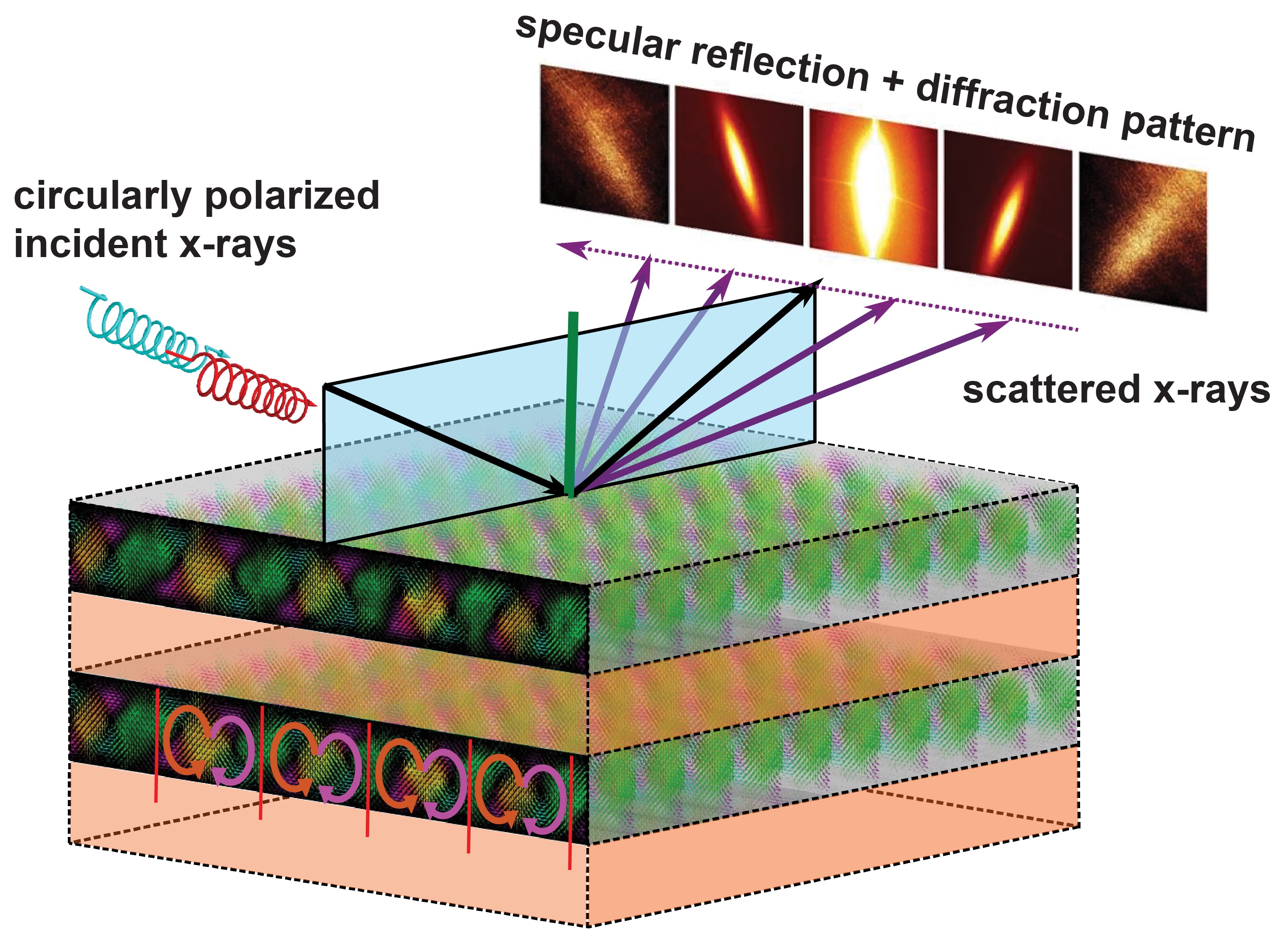Chirality—or handedness—is an intriguing symmetry property in nature that is found in our own hands: when the thumbs point in the same direction, the palms are opposite. Your hands are mirror images, but not superposable. Each hand is therefore chiral. Chirality is present in many forms and at many scales, from the spiral-staircase design of our own DNA to the spin and drift of spiral galaxies—it can even determine whether a molecule acts as a medicine or a poison in our bodies. However, engineering and controlling chirality at the nanoscale in electric-dipole configurations (i.e., in ferroelectric materials) has proven very difficult.
Recently, a team of researchers at Berkeley Lab and UC Berkeley studied carefully engineered samples with alternating layers of lead titanate (PbTiO3) and strontium titanate (SrTiO3). Neither compound shows chirality by itself, but when combined into a precisely layered superlattice, electron microscopy images obtained at the Molecular Foundry showed electronic vortex structures.
To probe for chirality, resonant soft x-ray diffraction (RSXD) using circularly polarized x-rays was employed at ALS Beamline 4.0.2, revealing both left- and right-handed electronic chirality in the samples. RSXD uses the wavelength and polarization dependence of resonant electronic transitions to probe periodic nanometer-scale details in electronic structure. Understanding the results required a substantial development in modeling the physical phenomena responsible for the resonant diffraction patterns.
Building on these intriguing results, the research team is currently pursuing studies of other material combinations with the potential for even higher functionality, such as switching the chirality of electric-dipole configurations simultaneously with magnetic order in engineered layers dubbed chiral multiferroics.

P. Shafer, P. García-Fernández, P. Aguado-Puente, A.R. Damodaran, A.K. Yadav, C.T. Nelson, S.-L. Hsu, J.C. Wojdeł, J. Íñiguez, L.W. Martin, E. Arenholz, J. Junquera, and R. Ramesh, “Emergent chirality in the electric polarization texture of titanate superlattices,” PNAS Early Edition, doi:10.1073/pnas.1711652115 (2018).
Adapted from the Berkeley Lab press release, “X-Rays Reveal ‘Handedness’ in Swirling Electric Vortices.”